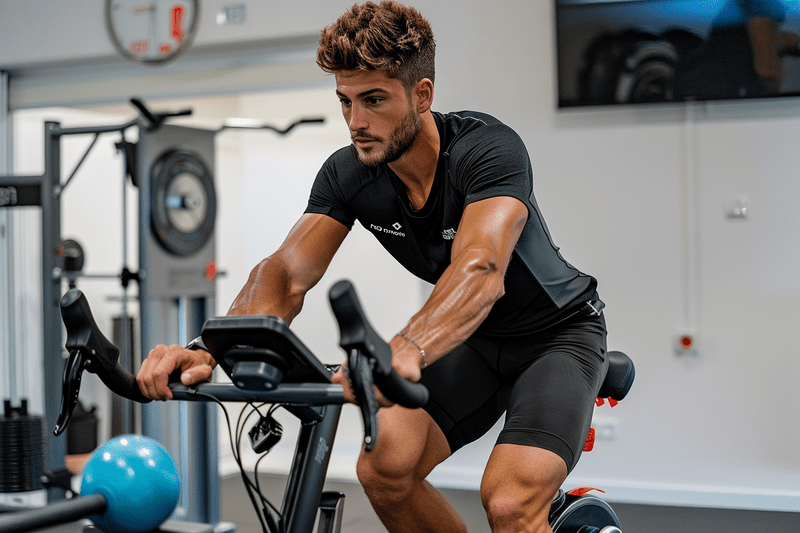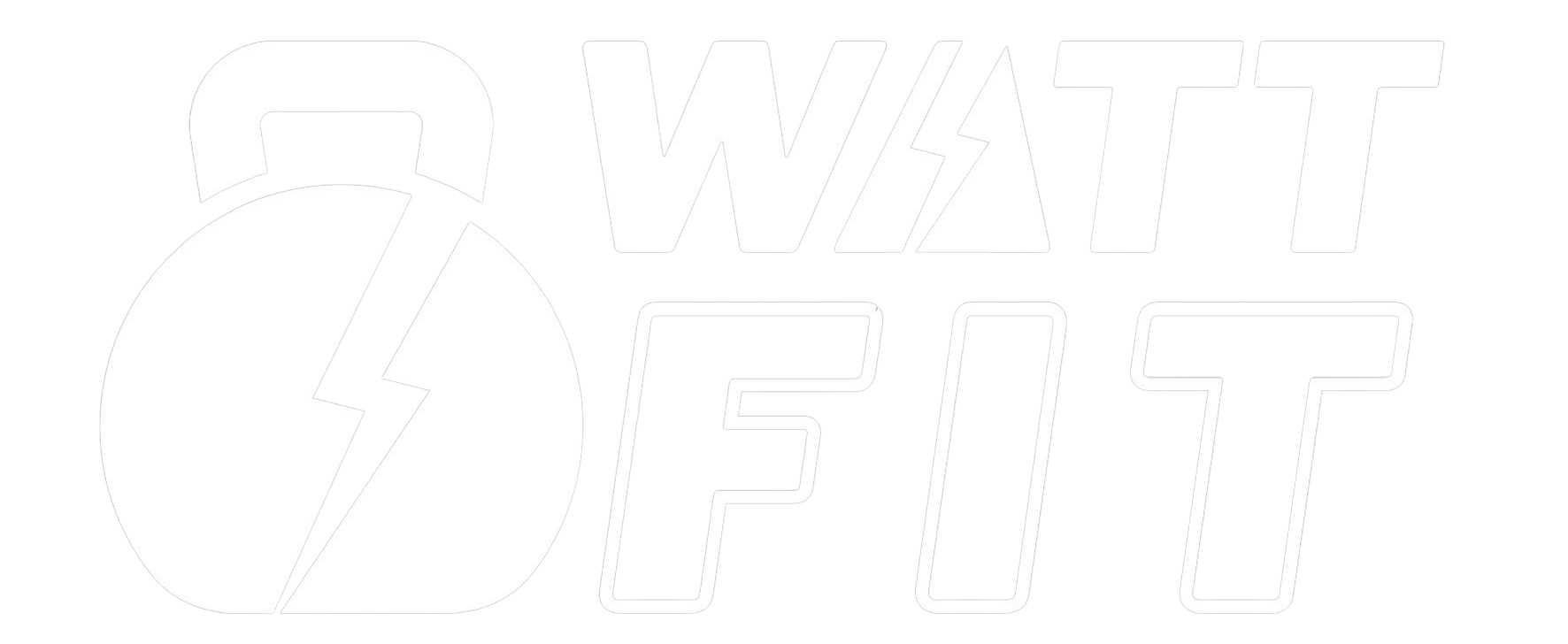
High-Intensity Interval Training (HIIT) has quickly become one of the most popular fitness trends due to its efficiency and effectiveness. HIIT involves short bursts of intense exercise followed by brief periods of rest or lower-intensity exercise, making it an excellent choice for those looking to burn fat and build muscle quickly.
Contents
Whether you’re new to fitness or a seasoned athlete, HIIT offers adaptable workouts that can fit into any busy schedule. By cycling through high and low-intensity intervals, HIIT keeps the heart rate elevated, maximising calorie burn and improving cardiovascular health.
HIIT can be performed using bodyweight exercises, dumbbells, or even cardio workouts like sprinting. With workouts ranging from 15 to 45 minutes, it’s possible to achieve significant fitness gains in a short amount of time.
What is HIIT?

High-Intensity Interval Training (HIIT) is a workout method combining intense exercise bursts with short recovery periods. It’s known for efficiency and effectiveness, making it popular among fitness enthusiasts and professionals.
Defining High-Intensity Interval Training
HIIT involves short bursts of high-intensity activity followed by periods of low-intensity exercise or rest. This cycle is repeated several times within a session. Workouts can range from 4 to 30 minutes in duration.
Exercises used in HIIT often include sprints, cycling, and bodyweight exercises like burpees and jump squats. The key is maximum effort during intense phases, making it a versatile and adaptable workout.
Benefits of HIIT
HIIT offers numerous benefits, especially for those with limited time. Key advantages include:
- Calorie burning: HIIT burns a significant number of calories in a short time.
- Improved metabolism: It elevates metabolic rate for hours post-workout.
- Cardiovascular health: Enhances heart health and reduces blood pressure.
- Fat loss: Particularly effective at targeting belly fat.
- Muscle retention: Helps preserve muscle mass during weight loss.
Physiological Impact on the Body
HIIT impacts the body on multiple levels. It improves aerobic and anaerobic fitness by pushing both cardiovascular and muscular systems.
Cardiovascular gains include increased VO2 max, allowing the body to use oxygen more efficiently. Muscular benefits arise as HIIT enhances endurance and power.
Furthermore, HIIT stimulates the production of ketone bodies and growth hormones, aiding in fat metabolism and muscle growth. The result is a more efficient, resilient, and capable body.
Planning Your HIIT Workouts
Crafting an effective HIIT workout includes developing a routine, balancing strength and cardio, and adjusting the intensity and duration for optimal results.
Developing a Routine
When developing a HIIT routine, consistency and variation are key. He or she should aim to perform HIIT workouts 3-4 times a week.
Start by selecting exercises that target different muscle groups. This ensures a full-body workout and avoids overworking one area. Pair exercises like burpees, jump squats, and plank jacks with appropriate rest intervals.
Keep sessions between 20-30 minutes. This duration maximises efficiency and reduces the risk of injury. Tracking progress through a workout journal can help monitor improvements and maintain motivation.
Incorporating Strength and Cardio Exercises
Combining strength and cardio exercises in a HIIT workout enhances endurance and builds muscle effectively. They should include moves like dumbbell thrusters or kettlebell swings for strength, and mountain climbers or high knees for cardio.
Alternate between strength and cardio exercises to maintain high intensity. For instance, after a set of push-ups, follow with 30 seconds of sprinting on the spot.
This variation prevents monotony and engages different muscle groups. Incorporating equipment like resistance bands or weights can further challenge and progress the workout regimen.
Adjusting Intensity and Duration
Adjusting intensity and duration is crucial to cater to individual fitness levels and goals. Beginners might start with a 1:2 work-to-rest ratio, such as 20 seconds of high intensity followed by 40 seconds of rest. More advanced participants can work towards a 1:1 ratio.
Gradually increasing intensity by either shortening rest intervals or increasing the workout duration helps in building stamina.
Monitoring heart rate through fitness trackers can help maintain the desired intensity. They should aim for 70-85% of their maximum heart rate during peak intervals. Adjustments should be made based on performance and recovery, ensuring the workouts remain challenging yet sustainable.
HIIT Techniques and Variations
HIIT training encompasses various techniques, each with a unique approach to fostering fitness. Key techniques include the fast-paced Tabata, the structured Little Method, and the intensive Turbo Training.
Tabata Training
Tabata is a popular HIIT protocol developed by Dr. Izumi Tabata. It involves performing a single exercise at maximum effort for 20 seconds, followed by a 10-second rest. This process is repeated continuously for 4 to 10 minutes. This structure equates to 8 rounds for a 4-minute session or as many as 20 rounds for longer sessions.
These intervals are designed to push cardiovascular systems to their limits, making workouts extremely efficient. Tabata can be applied to various exercises like squats, push-ups, or cycling, making it versatile for different fitness levels.
Little Method
The Little Method, named after Dr. Jonathan Little, is another HIIT approach. It consists of 60 seconds of high-intensity exercise followed by 75 seconds of low-intensity recovery. This cycle is usually repeated for around 8 to 12 sets, resulting in a session lasting approximately 27 minutes.
This method strikes a balance between aerobic and anaerobic systems, helping to improve cardiovascular fitness and endurance. Exercises often used include running, rowing, or cycling, ensuring a comprehensive full-body workout.
Turbo Training
Turbo Training is a high-intensity cycling workout. Sessions typically involve 30-second sprints at maximum effort, interspersed with 30 seconds of recovery. This format is repeated multiple times, with total workout durations ranging from 20 to 30 minutes.
The focus here is on maximising calorie burn and improving cardiovascular health. This method is particularly useful for those looking to increase speed and strength on the bike. Turbo trainers or stationary bikes are commonly used, making it ideal for both indoor and outdoor environments.
Nutrition and Recovery
Proper nutrition and hydration are crucial to support the energy requirements and muscle recovery during High-Intensity Interval Training (HIIT). Effective recovery strategies help in maximising the benefits of these workouts.
Dietary Considerations for HIIT
Nutrition plays a critical role in both preparation and recovery for HIIT workouts. Before exercising, a combination of complex carbohydrates and lean proteins can provide sustained energy. Examples include oatmeal with berries or a banana with peanut butter.
Post-workout meals should focus on a 3:1 ratio of carbohydrates to protein to replenish glycogen stores and repair muscles. Options like whole-grain cereal with fruit and soy milk, or a smoothie with yoghurt and spinach, can be beneficial.
Importance of Hydration
Staying hydrated is essential for maintaining peak performance during HIIT sessions. Water is the primary source of hydration, but electrolyte-rich drinks can also support prolonged sessions.
Aiming to drink at least 500 ml of water before the workout, and small sips during the exercise, can prevent dehydration. Post-workout, replenishing fluids lost through sweat is critical. Adding a pinch of salt to water or consuming a sports drink can help restore electrolyte balance.
Recovery Strategies
Effective recovery strategies ensure that the body heals and becomes stronger after HIIT workouts. Rest is a key component, allowing muscles to repair themselves. Incorporating light activities such as yoga or walking on rest days can aid in active recovery.
Eating nutrient-dense foods rich in antioxidants, such as berries and leafy greens, can help reduce inflammation. Foam rolling and gentle stretching can alleviate muscle soreness and improve flexibility, contributing to overall recovery.
Proper sleep, about 7-9 hours per night, is also vital for muscle recovery and overall health.
Progress Tracking and Goal Setting

Tracking progress and setting goals are essential aspects of effective HIIT training. VO2 Max is one way to gauge cardiovascular improvement. The formula used is:
VO2 max = maximum milliliters of oxygen consumed in 1 minute / body weight in kilograms
- MHR (Maximum Heart Rate) is calculated: (208 – (0.7 x age).
- RHR (Resting Heart Rate) is taken by counting heartbeats for 20 seconds, then multiplying by 3.
Progress Photos can visually reflect physical changes. Taking photos regularly and comparing them side by side can illustrate changes in muscle definition and body composition.
Clothing Fit offers another straightforward method. Paying attention to changes in how clothing fits can indicate progress in body shape and size.
Recording Workouts in a journal or app allows individuals to note exercise intensity, duration, and type. Adjustments can be made based on performance, ensuring continuous improvement.
A proper Warm-up Routine reduces the risk of injury. Light jogging, high knees, and dynamic stretches can prepare the muscles and joints for the workout ahead.
Goal Setting is another critical part. Goals should be SMART:
- Specific: Clearly define what you want to achieve.
- Measurable: Track progress with quantifiable metrics.
- Achievable: Set realistic targets.
- Relevant: Ensure goals align with overall fitness objectives.
- Time-bound: Set deadlines to maintain focus.
Making adjustments and reassessing goals periodically can keep individuals motivated and on track.
Frequently Asked Questions
What constitutes a HIIT training workout?
A HIIT workout involves short bursts of intense exercise followed by brief periods of rest or low-intensity exercise. Common protocols like Tabata include 20 seconds of high effort with 10 seconds of rest, repeated for a set duration. HIIT sessions can last from 4 to 30 minutes, depending on the routine.
Can HIIT sessions lead to effective weight loss?
HIIT has the potential to burn a significant number of calories in a short time. Studies have shown that it can increase calorie expenditure and may create a calorie deficit, which is crucial for weight loss. Its effectiveness depends on intensity and consistency.
Are 20 minutes of HIIT per day sufficient for health benefits?
Engaging in 20 minutes of HIIT daily can provide substantial health benefits. This duration is often enough to improve cardiovascular fitness, boost metabolism, and enhance overall conditioning. It’s important to maintain proper form and intensity to maximise the benefits.
What does a beginner’s HIIT training plan look like?
A beginner’s HIIT plan typically involves simple exercises like jumping jacks, squats, and push-ups. Sessions may last between 10 and 20 minutes, with a work-to-rest ratio of around 20 seconds of effort followed by 40 seconds of rest. As fitness levels improve, the intensity and duration can be gradually increased.
Is practising HIIT at home as effective as at a gym?
HIIT can be effectively performed at home with minimal equipment. Bodyweight exercises such as burpees, lunges, and planks are ideal for home workouts. Using equipment like resistance bands or dumbbells can add variety. Consistency and intensity are key, regardless of the location.
How often should one perform HIIT exercises in a week?
For most individuals, performing HIIT 2-3 times per week is sufficient. This allows for recovery and prevents overtraining. Each session should be followed by a day or two of rest or low-intensity exercise to aid muscle recovery and reduce injury risk.
